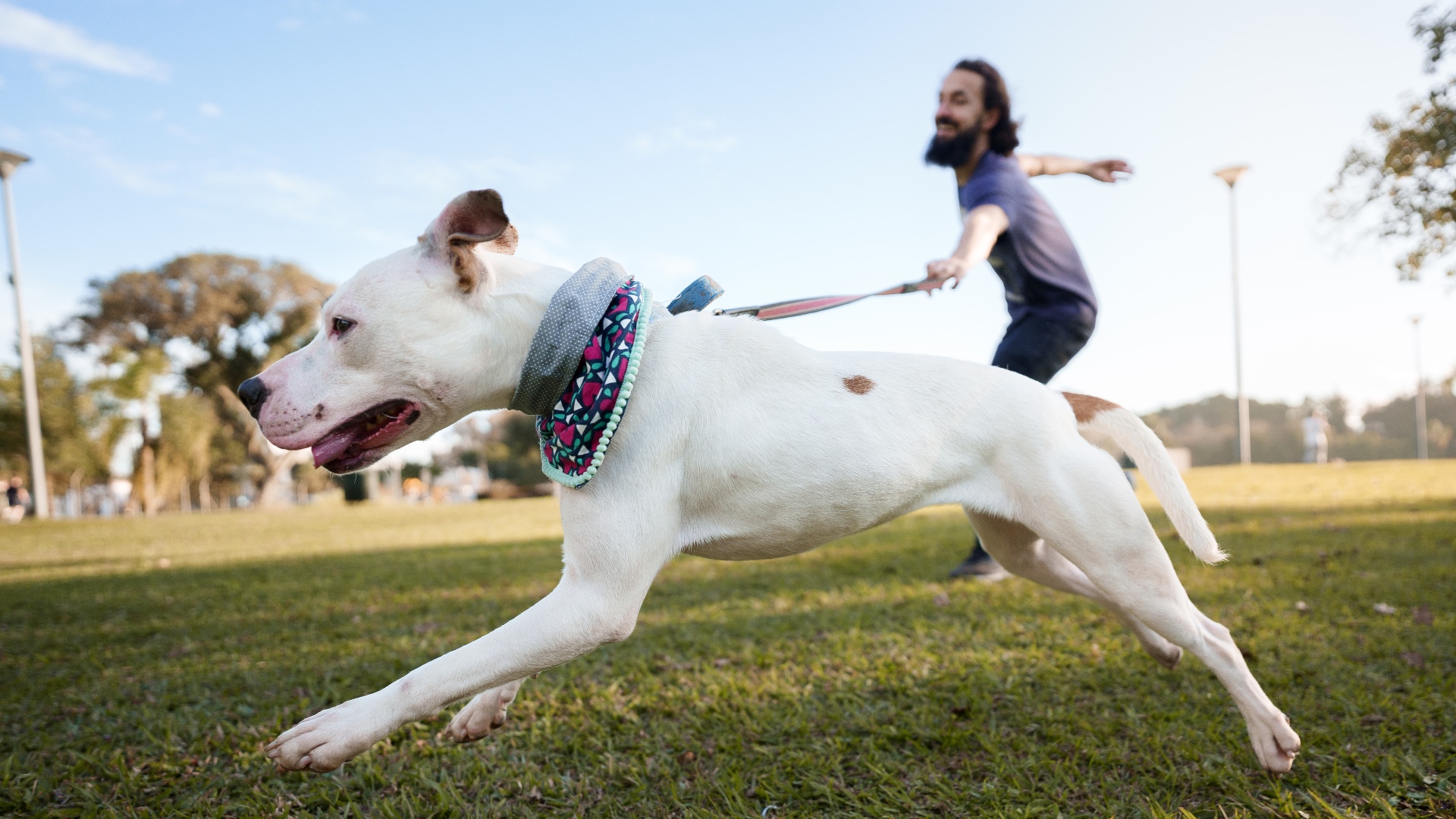
If you dream of being able to enjoy stress-free strolls with your dog that don't involve leash pulling, rest assured, you're not alone.
Figuring out how to stop a dog pulling on a leash is high on the priority list of a lot of pet parents, and it's not hard to see why.
A dog relentlessly pulling you around your neighborhood isn't just frustrating, it's also exhausting.
So, what's a dog owner at their wits end to do?
Well, while familiarizing yourself with the most common loose leash walking mistakes and doing your best to avoid them can certainly be helpful, expert dog trainer Julianna DeWillems has a simple tip.
"One of our first interventions to reduce a dog's pulling is to actually use a longer leash," she explains. "Closer to eight or 10 feet, which is different from the standard four or six foot leash."
DeWillems says that this will help accommodate your dog's quicker stride and will allow them to sniff and explore without hitting the end of the leash as quickly.
"There’s a misconception that a dog should walk right next to you the entire walk," DeWillems says. "This isn’t the case. Dogs benefit from being able to walk freely, sniff, and explore on their route. A longer leash means they can do this more without putting tension on the leash, which is a win for the human end of the leash."
With a longer leash, you can quickly gather up the slack when needed (such as in busy areas where you may be going around blind corners or have people passing you) and then let it go again when it's safe for your dog to have more freedom.
"Pairing a longer leash with proactively taught leash skills can make for a really pleasant walk for both us and the dog," DeWillems explains.
These skills include things like your dog checking in, walking close to you, responding to their name, and moving with you on cue.
If you feel your dog would benefit for some 1:1 support when it comes to learning these skills, we recommend reaching out to a professional trainer.







